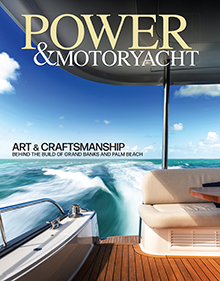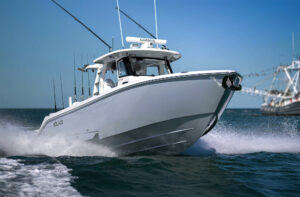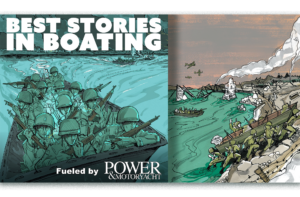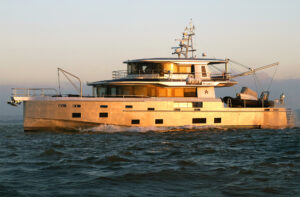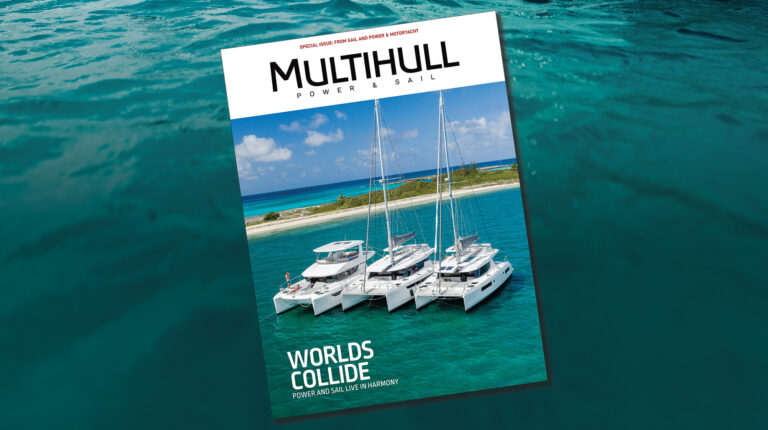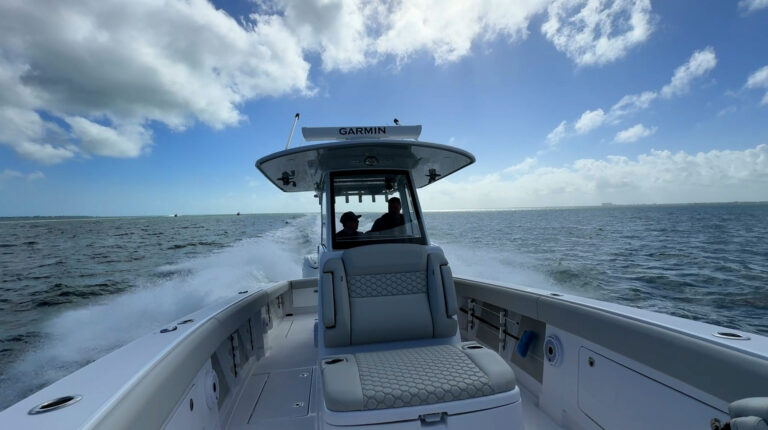Power & Technology: Scania Enters the Recreational Boating Market
Known stateside for powering commercial craft and trawlers, Scania enters the recreational market with a bang via a collaboration with Viking Yachts.
One of the many things I enjoy about being overseas is a chance to see vehicles that aren’t imported to our shores. My good-natured colleagues tend to entertain my enthusiasm for Citroën and Peugeot wagons and their spirited, fuel-efficient diesel powertrains, and they often share my eagerness when spotting sleek, E.U.-only Volkswagen and Mercedes-Benz models. At least they seem to.

On these trips, I’ve also noted a good deal of the big-dog semis maneuvering adroitly on narrow, centuries-old streets are branded Scania. The name is known stateside for its solid footing in commercial marine—both Bristol Bay (Alaska’s salmon gillnetters) and lobster boats in Maine are longtime proponents of the Swedish manufacturer. The engines also appear in the bellies of trawlers which utilize commercial engines rated by International Classification for Standards (ISO) as ICFN, or for continuous use. (Aussie builder Maritimo offers several models with Scania power as well, including the X50R, X60R and M64.)
In a strange way, the Covid-19 pandemic—which seriously impacted its North American commercial markets—helped Scania USA Marine Sales Manager Al Alcalá and his team make the case to the brass in Södertälje, Sweden, to invest in the EPA certification needed to enter the American pleasure craft space.
“We needed a different segment to diversify our portfolio,” said Alcalá.
Scania is now primed to make a run at the U.S. recreational market. Last year, the 130-year-old company achieved the EPA’s Tier 3 emission standards and launched a series of common-rail diesels, led by a 6-cylinder, 13-liter model and a 16-liter V-8 that ranges from 700 to 1,150 hp.
After striking a deal for distribution with New Jersey-headquartered Mack Boring (the company manages approximately 300
authorized dealers across 26 states as part of its robust dealer network), the team brainstormed ways to introduce Scania engines to the recreational market. President Patrick McGovern, an avid angler, looked no further than down the Garden State Parkway, enlisting Viking Yachts as the ideal complement for the powerplants. Mack commissioned a build for a Viking 46 Billfish,
powered by a pair of 900-hp, DI13 diesels.
“The Billfish [is the] perfect match to show the power and performance that Scania is known for,” McGovern said. “There’s no better platform.”
I met McGovern and the 46, christened Mack 900, in Atlantic City on the cusp of the White Marlin Invitational just up the coast. McGovern ran Mack 900 up and down the Eastern Seaboard along the tournament circuit, generating excitement for the brand slated to go head-to-head with established outfits like Caterpillar, Cummins, MAN, MTU and Volvo Penta.

The DI13 diesels are the most powerful engines ever installed on the 46 (options include 850-hp MAN i6-850s in addition to the standard 715-hp Cummins and 800-hp MANs). The Scanias tip the scales at approximately 190 pounds more than the MAN 850s but occupy nearly the same footprint as the less powerful engines—the blocks are made of a lighter, compacted graphite iron and are equipped with wastegate turbochargers that obviate the need for additional turbos and a supercharger.
Entering the engine room via the hatch in the salon sole, I found easy access to all service points, raw-water pumps and oil and fuel filters, made even simpler with the hydraulic lifts revealing the powerplants and eliminating the need to duck.
As I admired the Fjord Ice White engines and wondered aloud why Mack Boring didn’t opt for the proprietary, dayglo Scania Orange. Alcalá laughed and answered my query with a humblebrag about the builder’s service network—the company’s Smart Support logistics system boasts 98 percent parts availability with 24 hours of any location in North America.
“Pleasure boat owners will be pleased to know that the engines in their yachts are capable and reliable in the most demanding work environments in the world, supported by the most capable and growing support network,” Alcalá remarked.
Another item of note: like all Scania engines, each of the DI13’s six cylinders have individual heads that weigh about 40 pounds, so they can be removed or serviced one at a time by one tech with no need for heavy equipment.

Showtime came on the small but confused seas just outside the gambling mecca’s Absecon Inlet. There was a dozen of us onboard, with the Billfish’s 709-gallon fuel capacity sitting at two-thirds full and about 35 gallons of water. McGovern cleared the inlet’s no-wake zone and blasted into the Atlantic at nearly 37 knots and 2000 rpm on the way to an average top speed of 41.6 knots, with an occasional burst showing 43-plus knots on the chartplotter. At every speed and in every direction, the 46 simply made mincemeat of the conditions.
The boat settled in nicely at 1750 rpm and 31.3 knots, burning 49.2 gph, good for a leggy 451-nm range. Along the way, McGovern complemented how well-matched the ZF400A gears (with a 2:1 ratio) and the 4-blade Veem props are to the boat and the powerplants. The vessel was also equipped with ZF’s Smart Command Joystick, its iAnchor system keeping us stock still against the wind and outgoing tide while we sat in the Absecon Inlet and made close-quarters handling a no-sweat affair.
As of now, Viking Yachts Director of Communicatons Chris Landry said the Scanias are available by request on the 46. But with the excitement generated from the Mack 900 summer tour, the superlative performance of the engines, and Mack Boring’s plans to showcase at boat shows all fall and into the winter, I’m confident the Swedish brand is here to stay—and not just as some cool thing one encounters overseas and wonders why we can’t get it back home.

